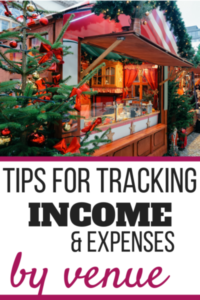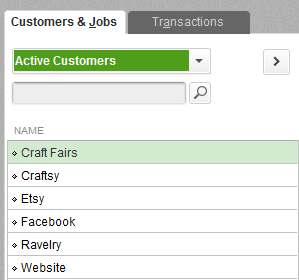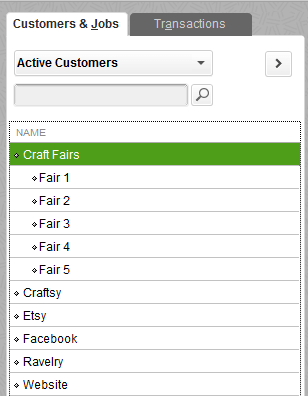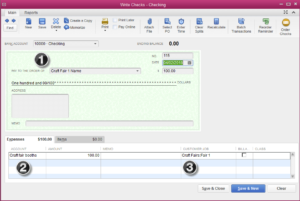Tracking income and expenses by venue or customer and the various jobs/projects you do for them is something every handmade business owner will want or need to do at some point.
We might want to know which craft fair we spent the most money on and the amount of money that we made from that craft fair – this information will help us to figure out which craft fair we’ll want to do again next year and which was a total waste of time, effort, and money.
Here are some bookkeeping tips to help you track income and expenses per venue.

So, here we are early in the year and we’re at the deciding point of which craft fairs we are going to participate in. We have our list of fairs and now we need to make the final decisions and submit our booth space fees – BUT – for the life of us, we can’t really remember how profitable some of the fairs were last year. When we look at our income and expenses from last year perhaps we just see totals without any breakdown to distinguish what money came from:
- Sales from our website
- Sales from Ravelry, Etsy, Craftsy, our Facebook shop, etc. (for finished goods or patterns that we sell)
- Sales from the different craft fairs that we did
- the list goes on
If you are using spreadsheets:
You might want to create a spreadsheet for each venue and then track the income and expenses for each craft fair – BUT THEN you have to update your monthly spread sheet with those costs (and others) as well. All in all that’s a LOT of spreadsheets and a LOT of time entering the same numbers in different places and different combinations.
Another option would be create a single Income spreadsheet with all the different income sources as columns and you simple enter the the totals in the correct column.
Either way, this takes even more time away from the thing you love most – your craft, your specialty – no matter what it is.
This situation also leave a huge margin of error – what if you forget to update a spreadsheet?
If you use accounting software, you can make your life so much easier, let me show you.
The screenshots that I’ll be providing below are from QuickBooks Premier Desktop. {NOTE: If you are interested in purchasing QuickBooks I can help you get discounts that are unavailable if you were to purchase directly from Intuit. FULL DISCLAIMER HERE – you will get a discount and I will receive a small commission from Intuit.}
The first thing you want to do is to develop a list of where your sales come from or the people/companies that you do work for. For example, let’s use the items I mentioned above:
- Website
- Ravelry
- Etsy
- Craftsy
- Facebook shop
- Craft fairs
In QuickBooks, these main sources of income (venues) become your customers. So your basic Customer Center entries would look like this.

Now QuickBooks has this really cool “Job” feature. As you sign up for each craft fair, you add it as a job below your Craft Fair customer like this.

Let’s see how this all works and ties together.
Assume you write a check for booth space for Craft Fair 1, this is how you record the check in QuickBooks:

An overview of the highlighted items:
- This is who you are making the check out to – they will be a Vendor in QuickBooks
- This is where the $100.00 fee will be assigned to your Profit & Loss Report in QuickBooks
- When you choose the appropriate job from your Customer List, QuickBooks also associates that money as a cost for that venue.
Here are a couple of reports from QuickBooks, so you can see what I’m talking about.
First is a normal Profit & Loss Report (you might call it and Income & Expense Report) showing the total that you spent on craft fair booths.

With the simple click of a button – go the the Show Columns drop down menu and select Customer:Job. Now you not only see the total you spent for the month – but also the amount that is assigned to each venue.

So, by now you are probably saying – “ok, so this takes care of recording the expense NOW – but the craft fair isn’t until November”. Well, that’s the beauty of software – it remembers everything!
When November rolls around, you enter all the sales invoices using the Job, record the money you received and perhaps any PayPal (credit card) fees. Let’s go back and take a look at this same report – just change the dates to be This Fiscal Year.

This is just one of many ways that software can make your bookkeeping experience much less time-consuming.
Hope you enjoyed this weeks Bookkeeping for your handmade business tip.



[…] track of your income and expenses is a LOT easier when you have a separate bank account. […]